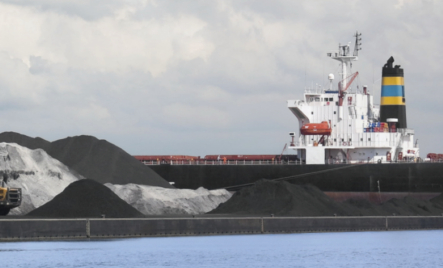
The London P&I Club together with Paul Willis Senior Associate at Hawkins have published a loss prevention guide regarding the risks of carrying coal cargoes. The report gives special consideration to the issues surrounding gas monitoring and ventilation.
The guide mentions that the management of coal cargoes and the proper use of gas detection equipment are vital to prevent coal fire claims. It also details the basic requirements regarding the installation, use and maintenance of gas detection devices and the different types of sensors involved in their operation.
According to the report, the gas detection and monitoring equipment on board ships can vary from large units such as the Riken Keiki RX–515 to smaller more portable types such as the BW Gas Alert Max XT II.
No matter the equipment however, the crew’s full understanding of how it works is crucial. Namely, if the crew is familiar with the equipment’s functions and the proper maintenance routines, then it will be easier to properly use the gas detection and monitoring equipment.
In addition, the report notes that tanker officers are more exposed to this type of equipment. For this reason, it recommends that consideration should be given to selecting more user-friendly and robust models for service.
The guide also presents good gas monitoring techniques, as well as making the following recommendations:
– Ensure that the sampling tube is clean and free from condensation, that the metal portion of the tube is spark proof, and that it is completely detached from the gas monitor. Check the inline filter (if fitted) is clean and dry;
– Switch on the gas monitor in clean air (i.e. in the ship’s office) and let the unit run for about five minutes before going outside to take measurements;
– Ensure that your gas monitor has been calibrated recently, i.e. it is “in date” and that all of the sensors pass the unit’s self-test function, which runs when the unit is switched on;
– Open the cargo hold sampling port. Insert the spark-proof metal tube so that the tube is inside the cargo hold and seal the collar;
– Re-attach the sampling tube to the gas monitor and draw a sample of the atmosphere through the tube, using the aspirator, until steady readings are obtained;
– Log the results on a suitable form which records cargo space, date and time for each measurement;
– Put the sealing cap back on the sampling port;
– Detach the sampling tube and let any condensation drain out by holding the tube vertically (i.e. not coiled);
– Repeat steps 4-8 for each hold to be monitored.
Ventilation
The IMSBC Code requires the holds to be ventilated for 24 hours after loading. However, unless expressly instructed, coal cargoes should not be ventilated after this 24-hour period, because unnecessary ventilation can cause the coal to begin to self-heat. If self-heating has started, more ventilation will provide oxygen, which will make the self-heating worse, and could potentially lead to ignition of the cargo.
Only if the LEL levels begin to rise, should ventilation be considered and only for the minimum period necessary to remove any accumulated methane.
According to the IMSBC Code, if LEL levels reach 20% or more, then the ventilation should be maintained continuously (except for gas monitoring). If the LEL level continues to rise after ventilation has been conducted continuously for 24 hours, or if CO levels begin to increase, then the report suggests that an advice of an expert should be sought as a matter of urgency.
Read the guidance: London-PI-Club-Carriage-of-Coal-Gas-Monitoring-and-Ventilation